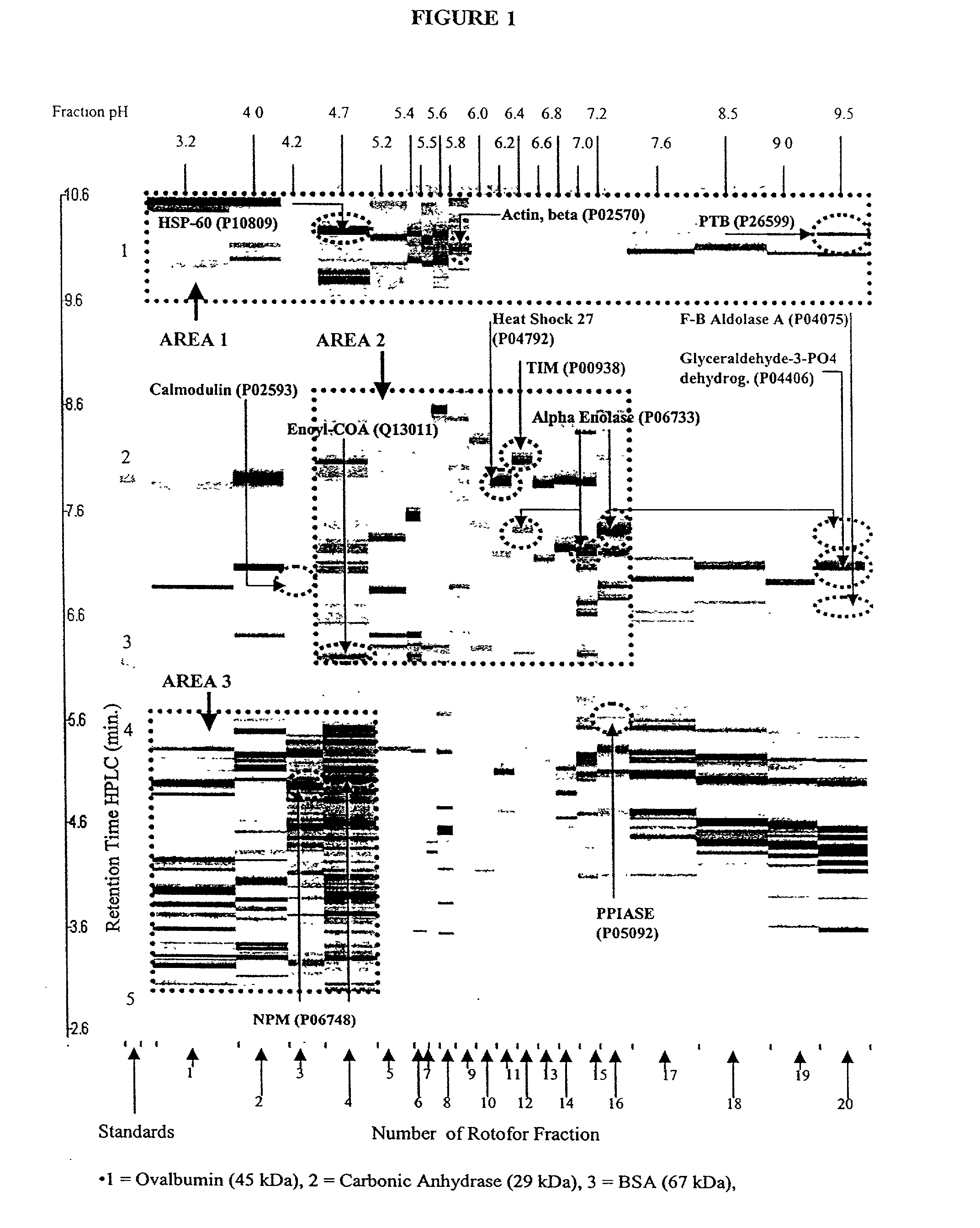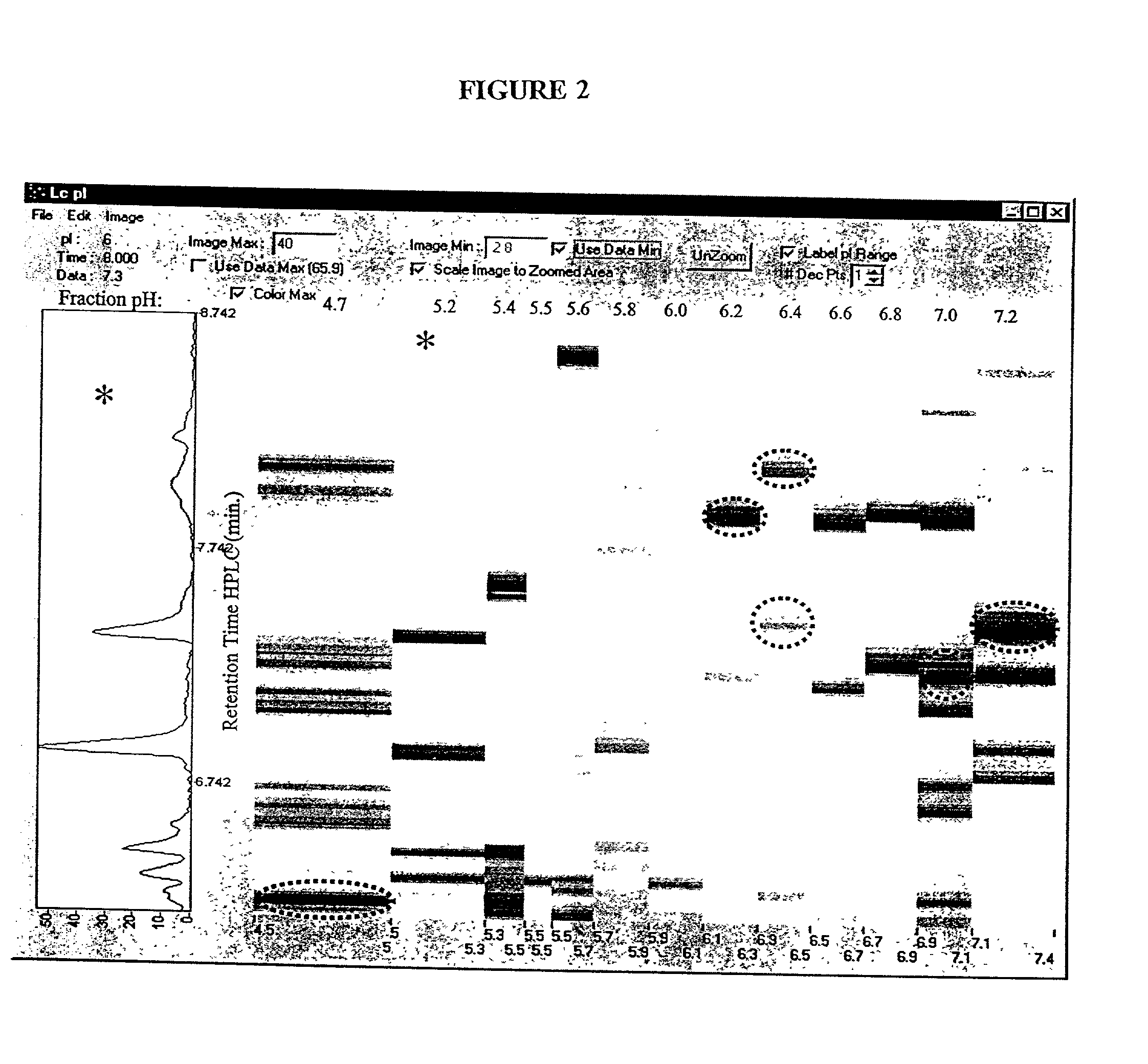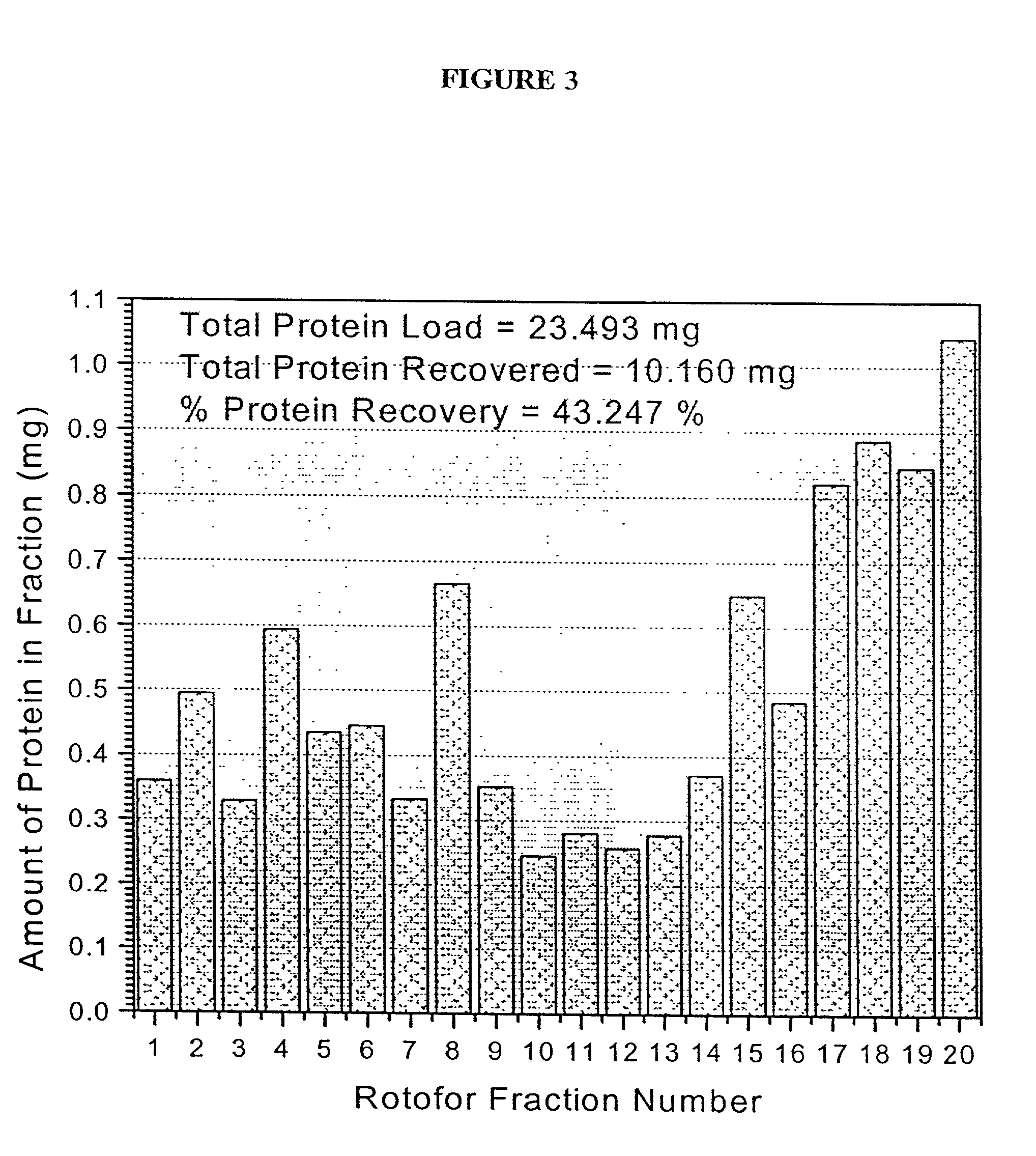Protein mapping
a technology of protein and peptide, applied in the field of protein mapping, can solve the problems of many limitations of traditional 2-d pages, and achieve the effects of low recovery, high-resolution separation, and elimination of problems
- Summary
- Abstract
- Description
- Claims
- Application Information
AI Technical Summary
Benefits of technology
Problems solved by technology
Method used
Image
Examples
example 2
[0114] 1-D Gel and SDS PAGE Separation
[0115] HEL cell proteins, resolved by Rotofor separation into discrete pI ranges, were further resolved according to their apparent molecular weight by SDS-PAGE. This procedure takes approximately 14 hours to complete. Samples of rotofor fractions were suspended in an equal volume of sample buffer (125 mM Tris (pH 6.8) containing 1% SDS, 10% glycerol, 1% dithiothreitol and bromophenol blue) and boiled for 5 min. They were then loaded onto 10% acrylamide gels. The samples were electrophoresed at 40 volts until the dye front reached the opposite end of the gel. The resolved proteins were visualized by silver staining. The gels were fixed overnight in 50% ethanol containing 5% glacial acetic acid, then washed successively (for 2 hours each) in 25% ethanol containing 5% glacial acetic acid, 5% glacial acetic acid, and 1% glacial acetic acid. The gels were impregnated with 0.2% silver nitrate for 25 min. and were developed in 3% sodium carbonate cont...
example 3
[0116] 2-D PAGE
[0117] In order to prepare protein extracts from the HEL cells, the harvested cell pellets were lysed by addition of three volumes of solubilization buffer consisting of 8 M urea, 2% NP-40, 2% carrier ampholytes (pH 3.5 to 10), 2% .beta.-mercaptoethanol and 10 mM PMSF, after which the buffer containing the cell extracts was transferred into microcentrifuge tubes and stored at -80.degree. C. until use.
[0118] Extracts of the cultured HEL cells were separated in two dimensions as previously described by Chen et al. (Chen et al., Rap. Comm. Mass Spec. 13:1907 [1999]) with some modifications as described below. Subsequent to cellular lysis in solubilization buffer, the cell lysates from approximately 2.5.times.10.sup.6 cells were applied to isoelectric focusing gels. Isoelectric focusing was conducted using pH 3.5 to 10 carrier ampholytes (Biorad) at 700 V for 16 h, followed by 1000 V for an additional 2 hours. The first dimension tube gel was soaked in a solution of 2 mg / ...
example 4
[0119] Rotofor Isoelectric Focusing
[0120] A preparative scale Rotofor (Biorad) was used in the first dimension separation. This device separated the proteins in liquid phase according to their pI, and is capable of being loaded with up to a gram of protein, with the total buffer volume being 55 mL. Alternatively, for analysis of smaller quantities of protein, a mini-Rotofor with a reduced volume can be used. These proteins were separated by isoelectric focusing over a 5 hour period where the separation temperature was 10.degree. C. and the separation buffer contained 0.1% n-octyl .beta.-D-galactopyranosi-de (OG) (Sigma), 8 M urea (ICN), 2% .beta.-mercaptoethanol (Biorad) and 2.5% Biolyte ampholytes, pH 3.5-10 (Biorad). The procedure used for running the Rotofor (Rotofor Purification System, Biorad) was of the standard procedure described in the manual from Biorad as modified herein. The 20 fractions contained in the Rotofor were collected simultaneously, into separate vials using a ...
PUM
| Property | Measurement | Unit |
|---|---|---|
| Mass | aaaaa | aaaaa |
| Length | aaaaa | aaaaa |
| Length | aaaaa | aaaaa |
Abstract
Description
Claims
Application Information
 Login to View More
Login to View More - R&D
- Intellectual Property
- Life Sciences
- Materials
- Tech Scout
- Unparalleled Data Quality
- Higher Quality Content
- 60% Fewer Hallucinations
Browse by: Latest US Patents, China's latest patents, Technical Efficacy Thesaurus, Application Domain, Technology Topic, Popular Technical Reports.
© 2025 PatSnap. All rights reserved.Legal|Privacy policy|Modern Slavery Act Transparency Statement|Sitemap|About US| Contact US: help@patsnap.com



